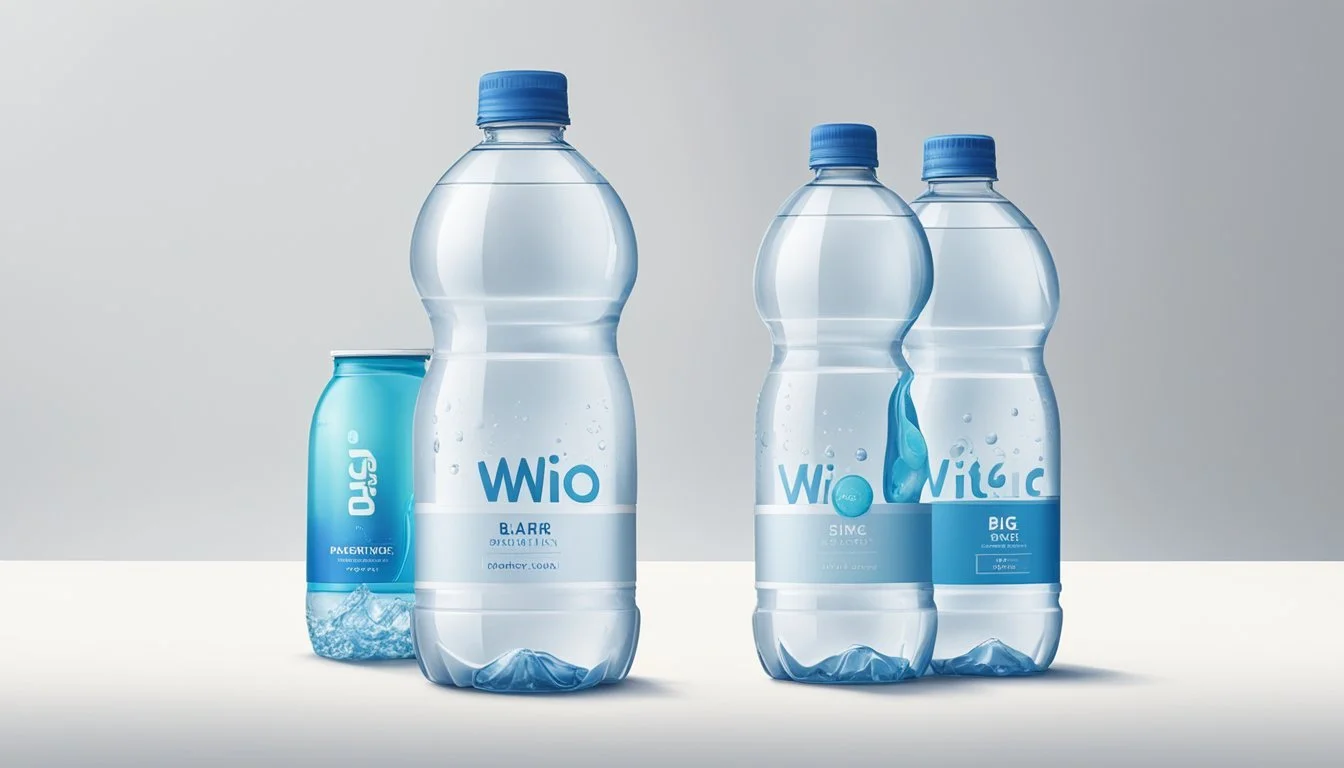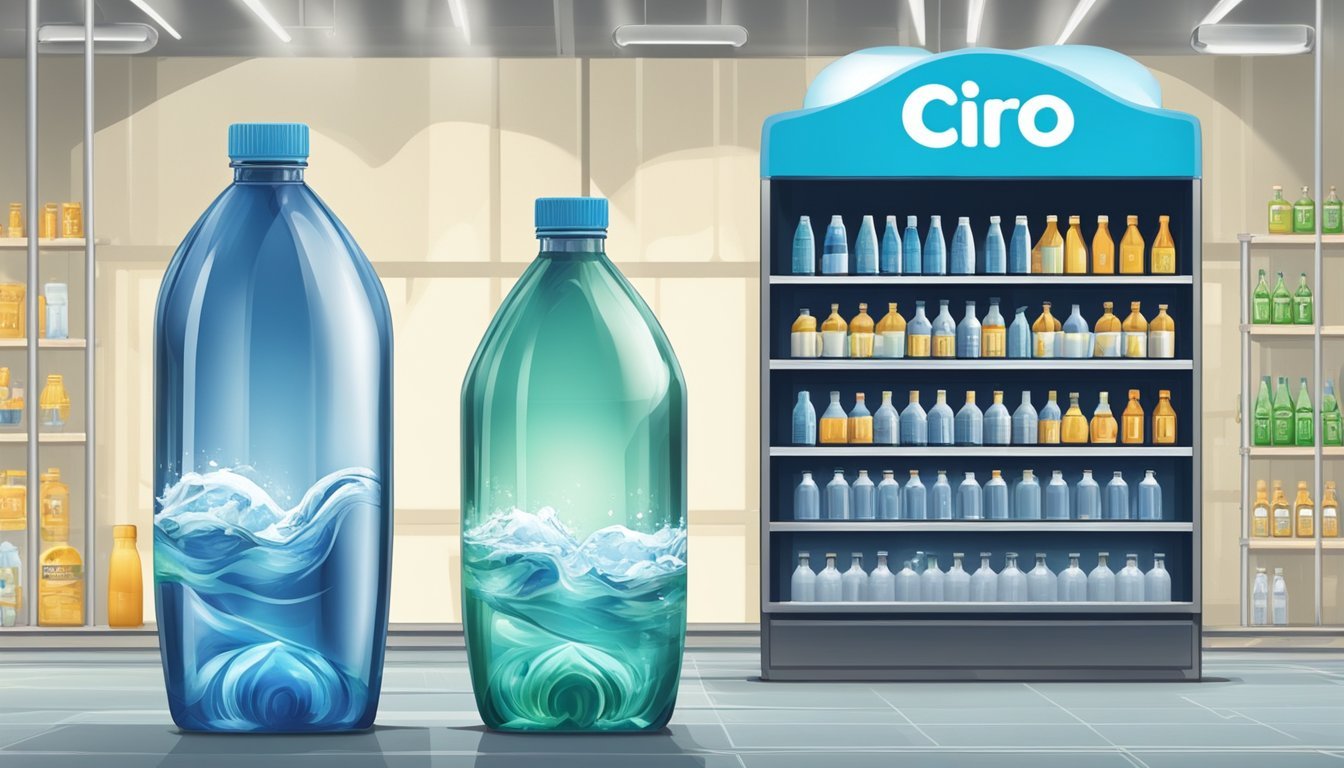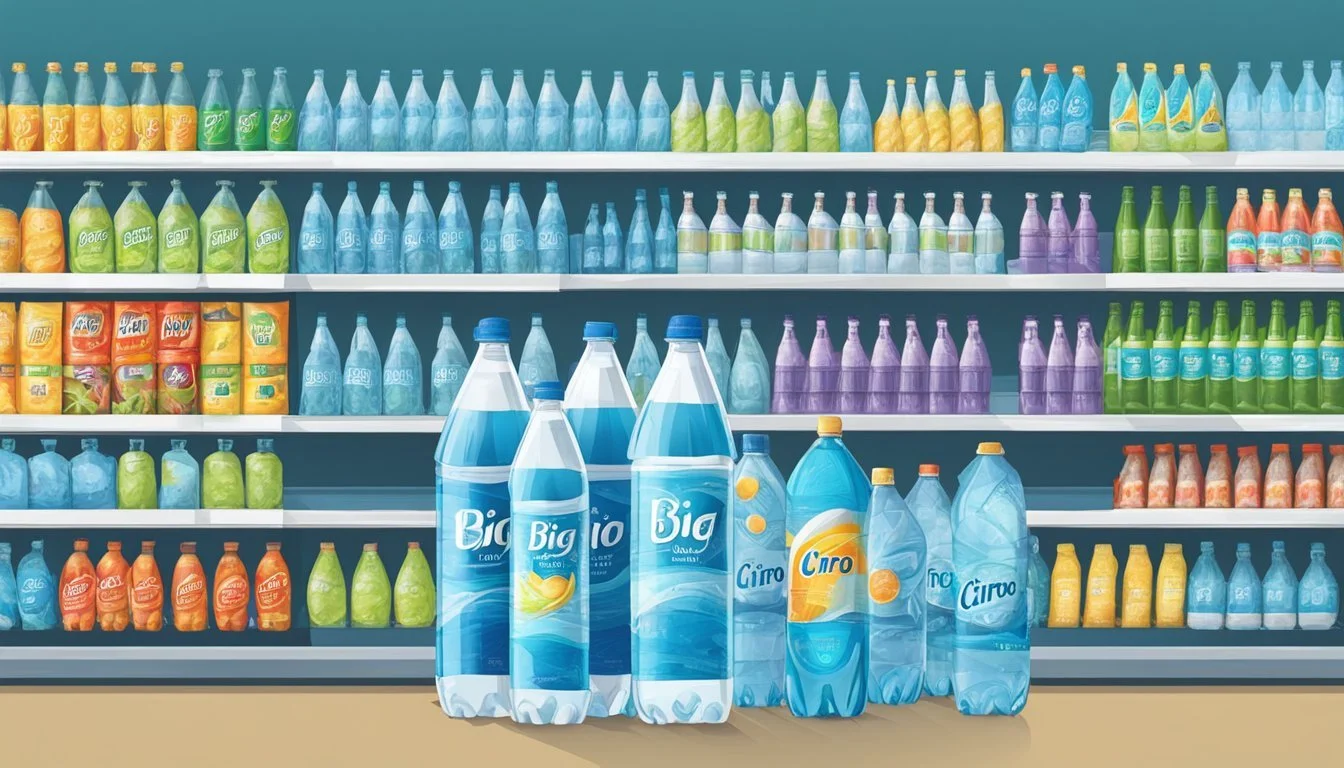Cirro vs. Big Win
Detailed Comparison of Bottled Water Brands
When it comes to bottled water, consumers are often faced with a myriad of options on the shelves. Two names that frequently come up in discussions are Cirro and Big Win. Both brands have garnered loyal followings, but which bottled water truly stands out in terms of taste, purity, and overall quality?
Cirro is often praised for its crisp and clean taste, sourced from natural springs and passed through multiple filtration processes to ensure its purity. On the other hand, Big Win offers a more budget-friendly option, with a reliable quality that satisfies day-to-day hydration needs. Big Win's accessibility and affordability make it a popular choice among consumers who prioritize cost without significantly compromising on quality.
Water enthusiasts often highlight the subtle differences in flavor and mouthfeel between the two brands. Cirro's slightly mineral-rich profile may appeal to those seeking a more refined experience, while Big Win's straightforward and accessible nature caters well to the general public.
The Essentials of Bottled Water
Water Quality is one of the primary concerns when choosing bottled water. It's crucial to ensure that the water meets stringent safety standards. Quality can vary greatly between brands, making it important to research and choose wisely for safe drinking water.
Hydration plays a vital role in maintaining overall health. Bottled water provides a convenient way to stay hydrated throughout the day. It’s especially useful for people on the go or in regions where tap water might not be safe.
Minerals often found in bottled water can contribute to daily nutritional needs. Key minerals include calcium, magnesium, and potassium, which support various bodily functions. These minerals also affect the taste of the water, contributing to preferences among consumers.
Health Benefits of drinking adequate water include improved digestion, better skin health, and enhanced physical performance. Proper hydration ensures that the body’s organs function efficiently.
Safe drinking water is paramount. Bottled water undergoes strict purification processes to remove contaminants, ensuring it’s safe for consumption. Regularly checking for certification seals can help consumers trust their choice of bottled water.
Here’s a brief comparison table for easy reference:
Aspect Importance Water Quality Ensures safety and purity Minerals Adds nutritional value and taste Hydration Maintains bodily functions Health Benefits Supports overall physical health
Choosing the right bottled water is more than just a preference; it's about ensuring quality and health.
Comparing Water Sources and Quality
There are notable differences between Cirro and Big Win bottled water products when it comes to their sources, quality, regulatory standards, and taste profiles.
Natural Spring Water vs. Purified Water
Cirro is a natural spring water sourced from underground springs, which are naturally filtered through geological formations. This typically ensures a high level of purity and a distinct mineral composition.
Big Win, on the other hand, uses purified water. Most purified water, including Big Win, is produced through reverse osmosis or other purification methods that remove contaminants from tap water or groundwater sources.
Comparing these two, Cirro offers a more naturally-derived water source, while Big Win emphasizes modern filtration methods to achieve purity.
Mineral Content and Health Effects
Natural spring waters like Cirro often contain varying levels of minerals such as calcium, magnesium, and potassium, which can have health benefits. These minerals are naturally occurring and contribute to the water's taste and potential health effects.
Big Win's purified water undergoes extensive filtration, often stripping away most mineral content. As a result, minerals in Big Win may be added back in controlled amounts after the purification process.
For consumers interested in the health benefits of minerals in their drinking water, Cirro provides a more naturally mineral-rich option. Big Win's approach offers cleanliness and controlled mineral re-addition.
Regulatory Standards: FDA vs. EPA
Bottled water like Cirro and Big Win is regulated by the FDA (Food and Drug Administration), whereas municipal tap water falls under the purview of the EPA (Environmental Protection Agency).
The FDA's regulations for bottled water ensure that it meets safety standards; however, the regulations can be less stringent compared to EPA standards for tap water. This regulatory oversight can affect water quality and safety assurance.
The difference in regulatory standards means that while both Cirro and Big Win are safe to drink, the processes and criteria under which their safety is verified differ significantly.
Taste Profile of Cirro and Big Win
Cirro's spring water offers a natural, mineral-rich flavour profile. The taste can vary slightly due to its natural origins, often described as clean and sometimes lightly sweet.
Big Win, being a purified water, tends to have a very neutral taste. The extensive filtration process, such as reverse osmosis, ensures that it lacks the mineral complexity of spring water, resulting in a more straightforward taste.
For those who prefer a neutral water taste, Big Win is the better choice. Conversely, Cirro's natural minerals provide a unique taste experience that many find more refreshing.
Production Processes: From Source to Store
Cirro and Big Win bottled waters undergo rigorous production processes to ensure quality and safety. Key steps include filtration, purification, and innovative packaging techniques that address both consumer needs and environmental impact.
Filtration and Purification
Both Cirro and Big Win emphasize water purity. They source their water from natural springs or underground aquifers. The initial stage involves removing large particulates through coarse filters.
Reverse osmosis is then used to separate impurities at a molecular level. Cirro's process includes additional carbon filtration to remove any residual chemical contaminants, enhancing taste and odor.
Big Win employs multiple purification methods, including UV light and ozone treatment, ensuring the water is pathogen-free. They also use mineral injection techniques to restore essential minerals lost during filtration, providing a balanced flavor profile.
Bottling and Packaging Innovations
Packaging plays a crucial role in the bottled water industry. Cirro opts for glass bottles for their premium product lines, targeting environmentally conscious consumers. Glass is fully recyclable and does not leach chemicals into the water.
For mass distribution, both Cirro and Big Win use PET plastic bottles, which are lightweight and cost-effective. They’ve adopted BPA-free plastic and use a reduced amount of plastic to minimize environmental impact.
Big Win's bottling plants employ automated systems that enhance efficiency and hygiene. These systems include robotic arms for handling bottles and advanced sealing techniques to prevent contamination. Cirro has also introduced biodegradable packaging for certain product lines to further their sustainability initiatives.
Health and Safety Considerations
When comparing Cirro and Big Win bottled water, it is crucial to examine the health and safety aspects. Contaminants, microplastics, and ensuring safe drinking water are significant factors to consider.
Contaminants and Microplastics
Both Cirro and Big Win bottled waters must adhere to specific safety regulations. Contaminants like lead and PFAS chemicals are critical concerns. Bottled water can sometimes contain contaminants like lead, which pose severe health effects, including cancer.
Microplastics are another major issue. Studies have shown that many bottled waters contain microplastics, which can have unknown long-term health effects. Ensuring minimal contamination is essential for consumer safety.
Ensuring Safe Drinking Water
Ensuring the safety of bottled water involves compliance with various regulations. The Safe Drinking Water Act mandates monitoring of water quality and contaminants. Both Cirro and Big Win ensure compliance by meeting stringent standards.
Regular testing for contaminants like fluoride, lead, and other harmful substances is necessary. Consumers should verify if their water providers conduct such tests. Proper bottling processes and quality checks help in maintaining safety standards.
Health Benefits and Risks
Fluoride in bottled water is often considered beneficial for dental health, but excessive amounts can pose risks. The health benefits of Cirro and Big Win bottled waters may include essential minerals; however, moderation is vital.
Risks such as exposure to PFAS chemicals and microplastics, and the potential for contaminants like lead, emphasize the need for cautious consumption. Accurate labeling and transparency about testing results are crucial for consumers to make informed choices.
Understanding these health and safety considerations helps in making better decisions regarding bottled water consumption. By focusing on contaminants, compliance with safety regulations, and potential health benefits and risks, consumers can choose safer drinking options.
The Influence of Branding on Consumer Choice
Branding significantly impacts consumer decisions, often leading them to prefer certain bottled water brands over others due to perceived value, loyalty, or ethical considerations. This section examines how market variety, brand perception, and environmental initiatives shape consumer preferences.
Market Variety and Flavor Options
The diversity of bottled water, including flavored water and traditional options, makes branding critical. Cirro and Big Win capitalize on this diversity by offering multiple flavors and types, capturing different consumer tastes.
Flavored water brands with unique and appealing options tend to attract consumers who seek not just hydration but also a pleasant taste experience. Offering a range of flavors increases the chances of meeting varying consumer preferences, making the brand more attractive.
Brand Perception and Loyalty
Brand perception plays a crucial role in consumer choice. Consumers associate brands like Cirro and Big Win with specific images, often tied to quality, purity, or prestige. Positive brand perception often translates to loyalty, making customers more likely to repurchase.
Brand loyalty can lead to price insensitivity, where consumers are willing to pay a premium for their preferred brands. This loyalty is built through consistent quality, effective marketing, and positive past experiences, which reinforce the brand's image in the consumer's mind.
Environmental and Ethical Branding
In today's market, environmental and ethical branding has become a significant factor in consumer choice. Brands like Cirro and Big Win promote eco-friendly practices by offering reusable bottles or boxed water alternatives, responding to the growing demand for sustainable options.
Ethical branding might also include fair trade practices or community support initiatives, which resonate strongly with socially conscious consumers. Companies that successfully communicate their commitment to environmental and ethical values can differentiate themselves and build a loyal customer base.
These three aspects of branding—market variety, brand perception, and environmental and ethical initiatives—each play a vital role in influencing consumer choice in the bottled water market.
Sustainability and Environmental Concerns
Understanding the sustainability and environmental implications of bottled water is crucial. This section explores the environmental impact of plastic bottles, the sustainability of water sources, and the promotion of responsible consumption practices.
The Impact of Plastic Bottles
Plastic water bottles are a significant environmental concern. Production requires vast amounts of energy and petroleum, contributing to greenhouse gas emissions. According to a study, the life cycle of bottled water results in an environmental impact that is 3,500 times greater than tap water.
The Environmental Working Group highlights the low recycling rates of plastic bottles, leading to increased pollution. Notably, only a small fraction of these bottles are recycled correctly, with the remainder often ending up in landfills or oceans, exacerbating plastic pollution.
Water Source Sustainability
Another key aspect of the environmental impact of bottled water is the sustainability of the water sources. Groundwater extraction for bottled water can cause significant ecological damage. Over-extraction can lead to diminished natural water reserves and negatively affect local ecosystems.
Companies like Cirro and Big Win often source water from natural springs and aquifers. While such sources are often high in quality, there is a pressing need to ensure that the extraction rates do not exceed the natural replenishment rates, to maintain long-term eco-friendly practices.
Promoting Responsible Consumption
Promoting responsible consumption is essential for mitigating the environmental impact of bottled water. Consumers can reduce their footprint by using reusable water bottles and opting for filtered tap water where safe. Organizations advocate for more eco-friendly options to reduce plastic waste and its negative impact.
Retailers and manufacturers are encouraged to adopt sustainable packaging and support recycling initiatives. By choosing products with minimal environmental impact, consumers can help drive the market towards more sustainable practices, ultimately benefiting the environment.







